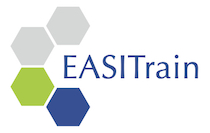Speaker
Description
The niobium-coated copper cavities are interesting candidates for replacing bulk niobium cavities in future facilities (e.g. FCC). Such cavities, ideally, should overcome some accelerator design problems related to bulk Nb cavities. However, Nb/Cu films tend to show more extreme “Q-slope” effect, and have other disadvantages compared to bulk-Nb cavities, which currently limit their application in high-gradient machines. It is known that the properties of the deposited niobium films depend on the surface topography of the Cu substrates. The Cu-Nb interface has also been proposed to cause a steeper Q-slope effect, due to thermal boundary resistance. This talk reports on the progress in study of the influence of the copper surface preparation methods on the SRF properties of bulk-like niobium films, deposited onto this surface, currently ongoing among HZB, INFN-LNL, University of Siegen and STFC. In this study the surface of several copper substrates was polished by different methods (chemical polishing “SUBU” and electropolishing), then coated with ~3 μm Nb films at different facilities. In order to determine the SRF properties, the resulting Nb films were tested at HZB with the Quadrupole Resonator (QPR) at operating frequencies of the accelerating cavities.
